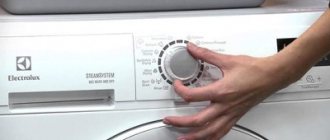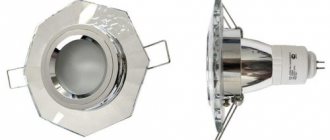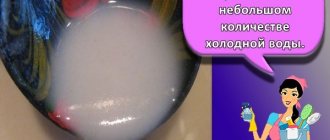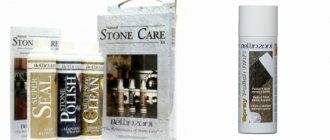Greetings, my dear readers! All of us, civilized people, brush our teeth every day, use a refreshing balm, and buy modern toothpastes. At least I sincerely hope so. But not everyone is familiar with such a useful thing as dental floss. But in vain!
After all, it is the one that can efficiently clean the spaces between your teeth - unlike the same brush. Let's fix the situation and start using this great device. To make this happen, in this article I will tell you how to use dental floss, why it is needed in general, and what benefits it will provide you for oral health.
The benefits of dental floss
What are the benefits of dental floss? The fact is that each tooth has as many as 5 surfaces. And you can remove plaque with a brush from just 3 brushes (lingual, front and chewing).
The remaining 2 contact surfaces can be effectively cleaned of harmful deposits only by using floss. Well, or interdental brushes, as an option. If you use thread correctly, you can avoid many problems.
Here are just the main facts of its usefulness, confirmed by research:
- it is able to remove plaque from the most difficult places, and it is this that provokes the appearance of cavities and inflammation of the gums;
- prevents the proliferation of dangerous bacteria at night when you sleep;
- the risk of gingivitis, caries and other diseases of the gums and teeth is reduced;
- and most importantly, you can avoid contact caries (the same one that affects 2 teeth at once);
- flosses flavored with extracts of medicinal plants (mint, sage, plantain, tea tree, eucalyptus) perfectly freshen breath, and additionally work as an anti-inflammatory and bactericidal agent.
- finally, food stuck between the teeth causes significant discomfort and the best and safest way to remove it is by using dental floss
Advantages
The procedure for using thread has a number of undeniable advantages:
- an affordable and fairly common remedy;
- effectively removes plaque and small food particles;
- completely cleans the interdental space;
- ease of use;
- the variety of shapes and materials allows you to choose the best option for yourself;
- strong and does not tear when used;
- applied impregnations disinfect the oral cavity and strengthen tissues;
- prevents the development of gum disease, inflammation, bleeding, and the formation of tartar;
- It is possible to perform oral hygiene anywhere without toothpaste and water.
Most of the benefits listed appear only after regular use of the thread. Therefore, it is important to get into the good habit of using it at least once a day to perform oral hygiene.
How to use dental floss correctly?
How should you use dental floss? Below, dear readers, you will find simple and understandable step-by-step instructions. With its help, you can easily master such a device as floss for cleaning teeth. For greater clarity, I recommend that you also watch the video clips below on this topic.
Step by step instructions:
- Pull out a fairly long piece from the body (box), the optimal length is 40-50 cm.
- Cut the thread using the box cutter or scissors if you don't have one.
- Wrap the ends tightly around the index fingers of your right and left hands. In this case, the thread must be held with the index and thumb of the left and right hands, creating additional tension with the thumb of the left or right hand.
- For cleaning, leave 3-4 cm between your fingers.
- Next, tightly wrap the thread in a “C” shape around one tooth, below, near the gum;
- And start moving the thread up and down.
- Do this on each side of the tooth.
- Repeat all this with each tooth, not leaving out even the most distant ones.
- When replacing teeth, try to apply a dry and clean area each time.
- If necessary, tear off new tape.
However, dental floss is not only full of benefits and advantages; if used incorrectly, it can also cause harm.
Attention, to prevent gum injury and damage, try to avoid saw-tooth movements back and forth. If you are new to this activity, then I would recommend that you start by doing this procedure several times a week. And only after some time, when the appropriate skill appears - daily.
If cleaning with your fingers is not easy for you, purchase a special holder - it will greatly facilitate the procedure.
Where can I find time for the procedure? Alternatively, it can be combined with watching videos and TV shows.
Watch how to use dental floss correctly
Correct technique
Learning how to use a thread correctly will require some effort, but then you will be able to carry out this procedure without any problems. Dentists recommend taking about 40 cm of dental floss and wrapping most of it around the middle finger of one hand. Wrap the rest of the thread around the middle finger of your other hand, leaving a small section of thread free.
Pinch the floss between the thumbs and forefingers of both hands and insert it between two teeth. Gently move the floss up and down until it reaches the gum, then wrap the floss tightly around the base of one of the teeth in a C shape and gently bring it below the gum next to that tooth. Clean the subgingival area of the other tooth in the same way. To treat adjacent tooth surfaces, move the floss up and down and back and forth, pressing it firmly against the tooth.
Remove the floss from between your teeth, take the clean floss from the finger that has most of the floss wrapped around it, and tighten the floss by wrapping the used floss around the middle finger of your other hand. Clean all spaces between teeth, using a clean section of floss each time.
Important Application Tips
So that you can successfully master this device and get the most out of it, follow these recommendations:
- don’t skimp, you’ll need a fairly long piece for comfortable grip;
- The cleaning procedure must be regular - repeat it daily before bed;
- During the cleaning process, try not to put too much pressure on your gums, so as not to damage them and cause bleeding;
- do not pull the floss under any circumstances, all your movements should be slow and careful;
- if you have quite significant gaps between your teeth, use round floss;
- if the teeth are pressed tightly, choose flat;
- children can use floss, but from the age of 8-10, when they are already able to use it adequately and safely, until this age it is important for them to learn how to brush their teeth correctly;
- If the thread breaks or flakes heavily during the process, this may be a sign of problems in the contact areas of your teeth (such as overhanging fillings or contact caries).
And most importantly, remember: dental floss is not an adequate replacement for toothpaste and brushes. But it is only their important and significant addition!
And if you apply all this together correctly, your teeth and gums will definitely thank you.
How to use dental floss video:
How often can it be used?
In principle, dental floss should be used as needed, but dentists advise flossing daily before bed, or at least 2-3 times a week.
It must be said that experts differ in their opinions about when to use floss - before or after brushing your teeth. Some believe that flossing after a toothbrush promotes better oral hygiene, while others believe that it should be used before a toothbrush, since after cleaning the interdental spaces, the toothbrush will clean the teeth better. In fact, this is not fundamentally important, the main thing is that dentists unanimously say that using dental floss is useful.
What kind of dental floss is there?
There are 2 types of threads - nylon (multi-filament) and Teflon (the second name is monofilament). Which one to choose? Nylon ones are also divided into waxed and waxless. The first ones glide perfectly, and that's a plus. But they consist of fibers, and the fibers can separate, this is a minus.
My wife has been flossing for a long time. Well, I still can’t! And the main reason was that I could not understand how to use it correctly. Usually, this remedy had to be resorted to only occasionally, when food debris got stuck between the teeth.
But every time I tried to brush my teeth with it, it got stuck there and separated into many small threads. And this unpleasant property of dental floss irritated me most of all.
However, it turns out there is another thread - Teflon or monofilament, which does not delaminate
Of course, a Teflon device costs a little more. But it glides perfectly even between closely spaced contact surfaces, and does not separate into tiny fibers. As for the cleansing abilities, these two types are approximately the same.
Species diversity
Using floss does not replace, but complements, brushing your teeth.
The range of dental floss is quite wide. As mentioned above, there are flosses: artificial and natural.
Natural floss is made from silk. Their main disadvantage is their ability to burst. Therefore, such thread is produced on a much smaller scale than artificial thread.
Synthetic products, in turn, are divided into:
- Nylon. This is a cheaper option.
- Teflon. More expensive threads that glide better than nylon ones.
Depending on the presence of spraying, such hygiene products are:
- Waxed;
- Unwaxed.
Waxed thread (treated with wax) is less traumatic and safer; it does not delaminate during cleaning and does not injure the gums. The unwaxed variety is more dangerous, but also more effective; it exfoliates and removes food debris better.
Waxed and unwaxed threads.
The shapes of floss are:
- Flat.
- Round.
Round floss has a large volume and is intended for those with wide gaps between teeth. Flat threads are smaller in volume and are better suited for people whose teeth fit tightly together.
Flat
Round
According to the nature of impregnation, flosses also vary:
- Antiseptic - impregnated with chlorhexidine. This thread prevents bacteria from entering the gum even if it is injured.
- Anti-caries – impregnated with sodium fluoride.
- Flavored - with a menthol aroma to give fresh breath.
According to their purpose, flosses are divided into:
- Professional – used only by professionals in specialized dental offices.
- Individual - can be used at home.
You should consult your dentist about which variety is best to choose.
Life story
By the way, I recently mastered flossing myself, and I’m very glad about it. I used to often hear about him from friends, but “until the thunder strikes...”. I began to experience contact caries quite often. And my dentist, a man with extensive experience, suggested that I was not brushing my teeth perfectly enough, and that the brush could not completely remove plaque.
Then he strongly advised me to use not only a brush, but also monofilament every evening. Imagine, after I started this new healthy habit, contact caries stopped destroying my teeth! Which once again proves the need to use floss for each of us.
That's all, dear friends! I really hope that the given instructions will help you easily master the technique of using dental floss. And I sincerely wish you this, as well as dental and oral health in general!
Be sure to share this material with your friends – via social networks, it won’t take much of your time. I will also be grateful to you for subscribing to my blog and comments. See you again!
Superfloss is used to clean the space between the gum and the denture.
Superflosses are dental flosses consisting of three parts: a hard tip, a fragment of regular floss and a wide nylon spongy fiber. Superfloss is used where regular floss cannot remove food debris.
The sponge fiber structure, which swells under the influence of saliva, thoroughly and effectively removes microbes and food debris. They are designed to remove food debris from under bridges, braces, implant structures, and from wide interdental spaces.
.
The many types of dental floss led to the need for technical clarification and the creation of instructions for using this device. Instructions telling and showing how to properly brush your teeth with dental floss are included in the box of each type of floss, or simply written on the box.
Let's look at some of them.
Dental floss technique
Floss reels come in 18 meter lengths, 25 meter lengths and 50 meter lengths. If you decide to try using floss, start with waxed thread - it is the easiest to use and, in addition, all the manipulations are drawn on the label. You can buy a special floss holder.
You also need to be quite careful when brushing your teeth with braces. Insert the hard end of the superfloss under the bridge or under the arch of the bracket system, between the crown on the implant and the tooth, as well as into the wide interdental space, etc. Extend the superfloss to the spongy fiber area. When wet, this area increases in volume.
Swipe the sponge fiber back and forth in a smooth motion to remove germ buildup and food debris. Pull the superfloss all the way through and remove it from your mouth.
When using floss, do not injure your gums! Avoid cutting your gums with floss!
EXPANDING FLOSS BIOREPAIR WITH HYDROXYAPATHITE (LIQUID ENAMEL) 40M Biorepair
Floss with built-in nanoparticles of bioactive hydroxyapatite actively protects against caries, acid erosion, inflammatory processes of the gums, and also restores damaged enamel and dentin structure.
Expanding floss BioRepair with hydroxyapatite (liquid enamel) 40m is a unique development of Italian scientists! Made from high quality multi-fiber material, waxed, with built-in nanoparticles of bioactive hydroxyapatite in a patented Microrepair formula (liquid enamel). Floss actively protects against caries, acid erosion, inflammatory processes of the gums, and also restores the damaged structure of enamel and dentin in the interdental spaces, which are the most vulnerable areas in the oral cavity.
The floss thread has the ability to change its volume: when stretched, it decreases and easily passes into the interdental spaces, and when the thread is loosened and under the influence of saliva, it expands sharply and completely fills the entire interdental space.
This innovative development allows you to easily and gently, but extremely effectively remove bacterial plaque and food debris from interdental spaces and tooth surfaces 40% more than regular floss. It will completely clean even wide interdental spaces throughout their entire plane. Recommended for use for medium to large interdental spaces and sensitive gums. Floss does not contain fragrances, therefore it is absolutely safe for people prone to allergies, pregnant women and people who take homeopathic medicines. 40m Made in Italy.
DENTAL TAPE – BIOREPAIR FLOSS WITH HYDROXYAPATITE (LIQUID ENAMEL) 50M
A unique floss tape with ultra-thin multi-fibers, which have the properties of opening when used, thus acting like a toothbrush, providing better, more thorough and at the same time gentle cleansing of the interdental spaces and the surface of the tooth along the entire plane.
Dental tape - BioRepair floss with hydroxyapatite (liquid enamel) 50m Without wax! No fragrance! Italian specialists have developed a unique floss tape with ultra-thin multi-fibers, which have the properties of opening when used, thus acting like a toothbrush, providing better, more thorough and at the same time gentle cleansing of the interdental spaces and the surface of the tooth along the entire plane. The tape is also saturated with nanoparticles of bioactive hydroxyapatite in the patented Microrepair formula (liquid enamel). Hydroxyapatite highly effectively protects against caries, acid erosion, inflammatory processes of the gums, and also restores the damaged structure of enamel and dentin in the interdental spaces, which are the most vulnerable areas in the oral cavity. It does not contain fragrances or wax, therefore it is absolutely safe for people prone to allergies, pregnant women and people who take homeopathic medicines. Recommended for use on narrow and medium gaps. 50m. Made in Italy.
The benefits and harms of using hygiene products
Floss as a hygiene product has a lot of advantages: it is good as a tool for cleaning teeth in hard-to-reach places where a toothbrush cannot penetrate, it protects the oral cavity from harmful bacteria, it is affordable and suitable for children and adults. It is impossible not to mention the disadvantages:
- if used insufficiently carefully, you can injure tender gums, which will result in an inflammatory process, which, in the absence of qualified medical care, can result in tooth loss;
- due to frequent and too vigorous brushing, gums may begin to bleed;
- Dentists consider periodontitis a contraindication for flossing, so if you notice blood, flossing should be stopped;
- floss is not an independent hygiene product; it should be used in combination with a toothbrush, toothpaste and mouth rinse - this is the only way to maintain a snow-white smile;
- experts note that in their practice there are cases of partial or complete destruction of diseased teeth due to the use of floss, so before you buy floss in a store, check with your dentist about the advisability of its use.
Sources:
- https://www.zdoroviemed.ru/stati/kak-pravilno-polzovatsya-zubnoj-nityu-poshagovaya-instrukcziya/
- https://24stoma.ru/zubnaya-nit.html
- https://dr-zubov.ru/krasota-i-uxod/sredstva/zubnye-niti/kak-pravilno-i-bezopasno-polzovatsya.html
- https://dentamed.club/gigiena/profilaktika/kak-polzovatsya-zubnoy-nityu.html
- https://MikDent.ru/estetika/uhod/kak-polzovatsya-zubnoj-nityu.html
- https://familystr.com/eto-interesno/poleznie-soveti/kak-polzovatsya-zubnoj-nitju/











